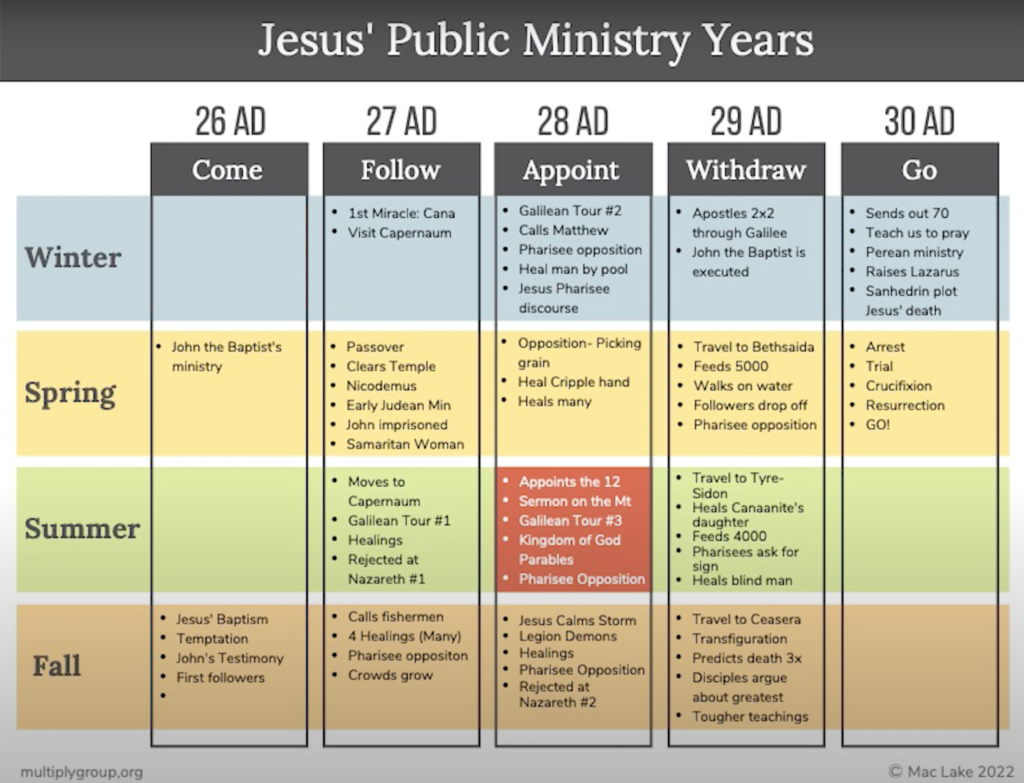I get asked this question more than any other: is leadership development biblical?
Leadership development is a topic that is widely discussed in the business world, but what about in the church? Can we say that Jesus was developing leaders, or was He making disciples?
My answer may surprise you – it’s both.
You see, leadership development is simply the discipling of leaders. It’s impossible to separate the two. I’ve often run into this issue where churches feel that leadership development is too much of a corporate concept and not derived clearly from the pages of scripture. But leadership development should be an extension of a church’s discipleship strategy.
Jesus was a master disciple-maker, and we can learn so much from His model of discipleship.
The following portion of this blog is my response to a conversation with a leader who asked me what I say to churches who struggle with leadership development in the church. (PS this is one of the most frequent topics I’m asked about on interviews lol)
Here are two things about leadership development being not just biblical but also something Jesus modeled clearly.
One thing is that most people struggle with misdefining leadership. Typically, people define leadership based on a cultural norm, not a biblical principle.
Jesus was a leader. He had a team of twelve people. He had a mission, He had a vision, He created a culture. He transformed people. He inspired people.
He was a leader, and he reproduced leaders. So that’s frist thing we have to define leadership based on biblical truth, not the cultural realities around us.
Now the second thing I would say is somebody says, “Well, leadership development doesn’t belong in the church and it’s not biblical.”
To this I would say is you gotta look at the life of Jesus.
In Studying the life of Christ chronologically and you see an incredible picture of what Jesus did with his disciples, and you begin to realize, “Wow, he did leadership development.”
I’m going to say a lot of detail in a shortened overview, but I want to show you a few things that might surprise people. (Use this chart below for reference.)

Jesus’ public ministry began in the fall of 26 ad (some people dispute that date, that’s not the point right now)
So it’s the fall of 26 ad on the chart. You’ll see the charts laid out by the years, but it’s also laid out by Winter, spring, summer, and fall. So Jesus’ baptism, his temptation, was that fall. And then he travels around, does some teaching his early ministry, then goes back down to Jerusalem and has Passover, interacts with Nicodemus. And then that summer, he moves to Capernaum. He does a tour through the 240 villages of Galilee.
Now, look at the fall. One year after his baptism and temptation he looks at Peter, James, Andrew, and John, and He says, “come follow me, and I’ll make you fishers of men.” He met those men a year earlier…
That was an invitation, not into leadership. That was an invitation into discipleship and followership, and that invitatiion took Jesus one year of interaction.
Now, look at what happens next. Jesus begins to teach, and they follow him. We know they’re following him at this point. He does another tour through the 240 villages, villages, and Galilee. And again, this surprises so many people. His twelve apostles are not with him on this trip. We know four disciples are, but the twelve are not because after that He meets Matthew and says, “come follow me.” He invites Matthew into a followership relationship.
And if you look at the summer of 28 ad, you’ll notice this falls at the midpoint of Jesus’ public ministry. Jesus goes up to a mountain, and He prays all night long. The Greek word for praying all night long is the only time that word is used in the Greek. And it means to pray without ceasing throughout the entire night.
Now, why is Jesus doing this?
At this point, if you look at the timeline, it is the height of his opposition and popularity. Jesus goes up, and he exhausts himself in prayer. I have to imagine in the context that we have that Jesus is praying, “I have to choose my key leaders that I’m gonna surround myself with.” He went before God, and he prayed because he had many disciples and followers at this point. So picture Jesus thinking through the names, praying through them, and scripture says the following morning he came down from the mountain and from among them, how many we don’t know, could have been hundreds from among them. He chose Twelve. Why? That they might be with him, that he might send them out, that he might do leadership development with them. That’s Luke six.
Now we know in Luke 9:12, he sends out the twelve. And what does he do? He gives them authority and power. Right? Now, if you look at that, it’s the Winter of 29 ad, which is almost six months after he selected them as apostles.
So here’s what you see: selection, training, and empowerment.
Immediately after he appoints the twelve, he does the sermon on the mount where he teaches these twelve. Yes, there’s a crowd there, but his focused teaching is at the twelve on looking at God’s word.
Hey guys, this is not about externals. The Pharisees are looking at this Torah as externals. I’m talking about internal change. Then he gives seven Kingdom of God parables.
Why does he do that?
Because he is teaching the kingdom of God, he is telling these twelve, “Guys, I’m giving you seven mental images so that when I send you out to teach the kingdom of God, you’ve got these seven memory devices, seven stories that you can carry with you. And by the way, the first is the parable, the four soils, a discipleship diagnostic tool”.
I could keep going through more of this, but you can see He’s doing leadership development all day long.
I’ll leave you with a verse and a challenge.
Ephesians 4:11-12 “So Christ himself gave the apostles, the prophets, the evangelists, the pastors and teachers, to equip his people for works of service, so that the body of Christ may be built up”
What if we moved beyond only discipling like Jesus and stepped into leading like Jesus?
Next Steps
If you want to learn how to build an intentional strategy to disciple leaders like Jesus then book a FREE call with my team, The Multiply Group, and we will help you discover your best next step.
You can also get the book “The Multiplication Effect”, and it will teach you how to build a culture of leadership discipleship.

